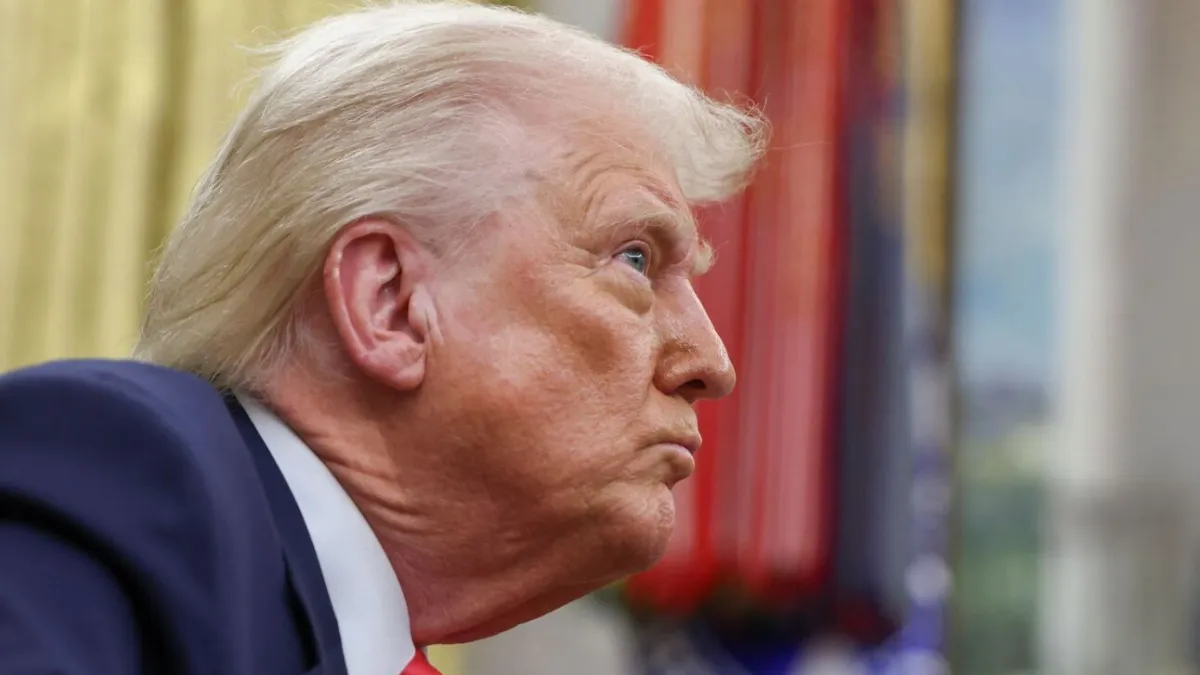
President Donald Trump hit the pause button on his latest round of higher tariffs Wednesday, reducing import taxes on goods from most countries to the new basic minimum of 10% for the next 90 days. China was a notable exception, though. Instead of reducing tariffs on Chinese goods, Trump raised them, increasing an already high 104% tariff rate to 125%, effective immediately.
The suspension caused a huge sigh of relief both on Capitol Hill and Wall Street, sparking a massive rebound in stocks, with the S&P 500 rising 9.5%, the biggest one-day gain since 2008 and the third largest increase since World War II. The Dow Jones Industrial Average soared 2,962 points, or 7.9%, while the tech-heavy NASDAQ 100 surged 12%.
We meant to do that: Trump administration officials claimed the pause in the tariff war was part of a premediated plan aimed at encouraging the renegotiation of trade agreements. Treasury Secretary Scott Bessent said the delay had been Trump’s “strategy all along,” while Press Secretary Karoline Leavitt chided skeptical reporters, telling them they “clearly missed” Trump’s “Art of the Deal” and “failed to see what President Trump is doing here.”
Trump, however, indicated that the recent alarming plunges in the global markets played a role in his decision to delay the latest round of extraordinarily high tariffs on trading partners around the world. Treasury yields had surged, suggesting investors who traditionally sought out U.S. bonds when seeking safety were now looking elsewhere.
Asked why he decided to pause, Trump said things “looked pretty glum” over the last few days. “Well, I thought that people were jumping a little bit out of line. They were getting yippy. They were getting a little bit afraid,” he said.
Trump’s critics offered a different take. Senate Minority Leader Chuck Schumer said the president “is feeling the heat from Democrats and across America about how bad these tariffs are.” He added that Trump “is reeling, he is retreating, and that is a good thing.”
Either way, Trump officials said they will start holding talks with the more than 75 nations they say have contacted them seeking new trade deals. “Each one of these solutions is going to be bespoke, it is going to take some time, and President Trump wants to be personally involved,” Bessent told reporters. “That’s why we’re getting the 90-day pause.”
Still clashing with Beijing: China on Wednesday announced that it was raising its own tariff on U.S. imports to 84%, up from 34% previously, calling Trump’s decision to add another punitive tariff on China a “mistake upon a mistake.”
Trump said on his social media platform that he was raising the duties on Chinese imports to 125% due to “the lack of respect that China has shown to the World’s Markets.”
Referring to China as a “bad actor,” Treasury Secretary Scott Bessent said China is the central focus of Trump’s trade initiatives. “China is the most imbalanced economy in the history of the modern world, and they are the biggest source of the U.S. trade problem — and indeed, they are a problem for the rest of the world,” he said.
The other two largest trading partners of the U.S., Mexico and Canada, are also under different tariff rules, and Trump’s pause will not impose a 10% tariff or change the other tariffs previously announced on the pair. Although there appeared to be some uncertainty on what the rules for the U.S. neighbors are at the moment, The Wall Street Journal reports that they are still subject to 25% tariffs on goods not covered by the USMCA trade agreement, as well as the 25% tariffs on steel, aluminum and foreign autos.
Experts react: Investors were delighted by the pause in the tariffs, and analysts at Goldman Sachs said they are withdrawing their forecast of a recession this year. “This is the pivotal moment we’ve been waiting for,” said Gina Bolvin, president of Bolvin Wealth Management Group, per CNBC. “The immediate market reaction has been overwhelmingly positive, as investors interpret this as a step toward much-needed clarity.”
But the pause does not provide anything like a final answer to how Trump’s trade policy will play out. “It’s still too early to signal an all clear,” said Dave Sekera, Morningstar’s chief U.S. market strategist. “Trade negotiations have yet to start and once they do, there will be positive and negative headlines as each party positions itself to extract the maximum amount of concessions possible.”
Diane Swonk, chief economist at KPMG, said the Trump trade war has already hurt the economy, and remains a threat. “This is nuts. Damage done. Market relief is a head fake, unless the administration makes a major course correction,” she told The New York Times. “Uncertainty is its own tax on the economy.”
Some tax experts noted that even though some of Trump’s highest tariffs have been paused, the new baseline tariffs are high nevertheless, and the trade war on China continues. “Folks, a 10% broad tariff on everything plus 125% on China, is a **25pp increase in the effective tariff rate**, even accounting for USMCA exemptions,” said economist Ernie Tedeschi of the Yale Budget Lab.
Erica York, senior economist at the business-friendly Tax Foundation think-tank, noted the same thing. “Paging everyone: a 10% universal tariff plus higher on China is still a massive escalation!”
That massive escalation, along with China’s response, will have a noticeable effect on all kinds of consumer products, Cornell economics professor Wendong Zhang told the Times. For example, 73% of smartphones, 78% of laptops and 77% of toys are made in China, Zhang said, and finding new suppliers will take considerable time and likely involve significant price increases.